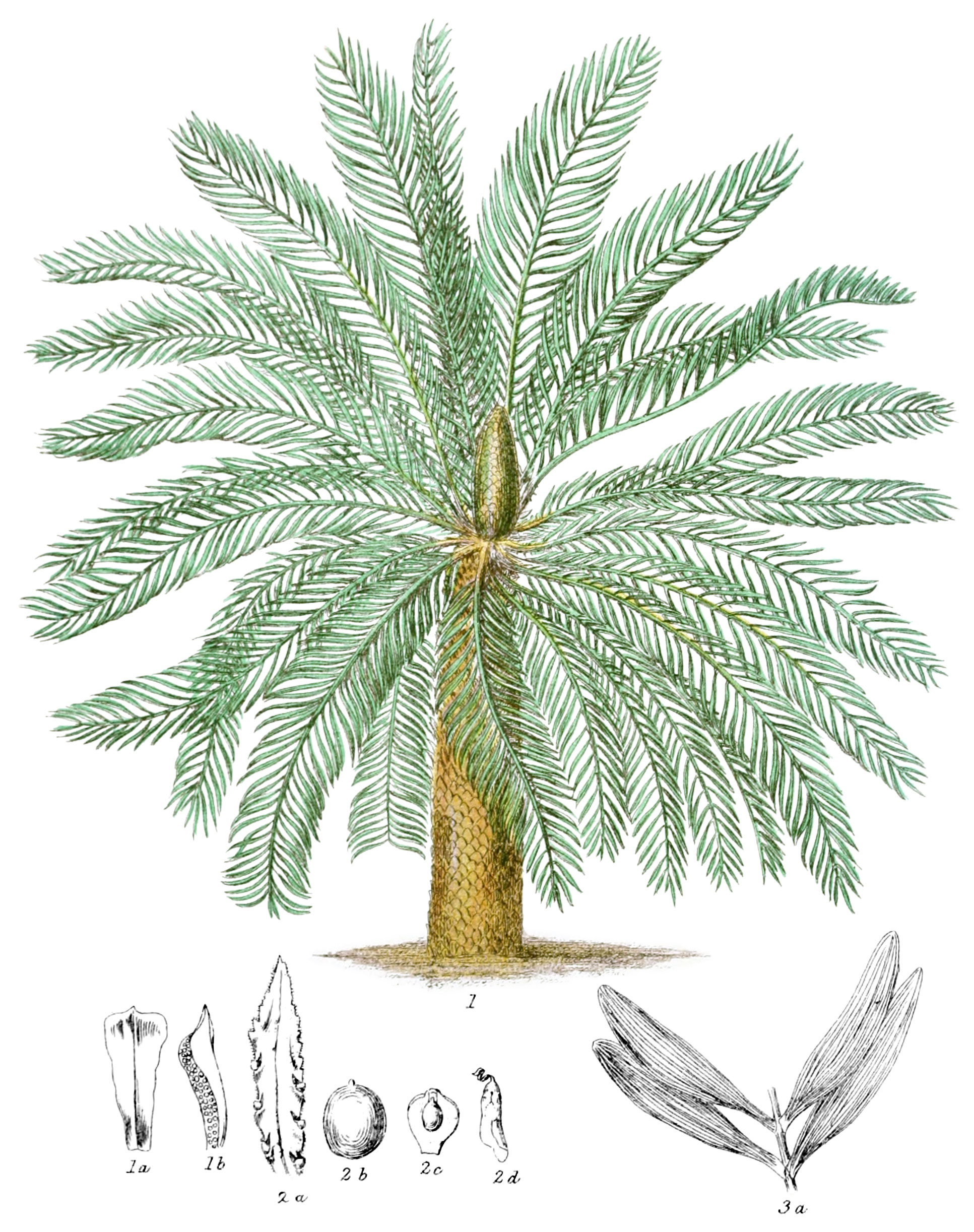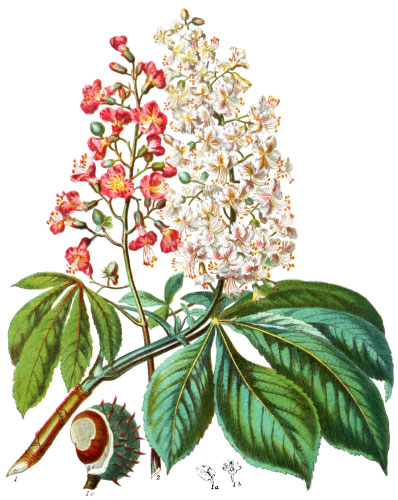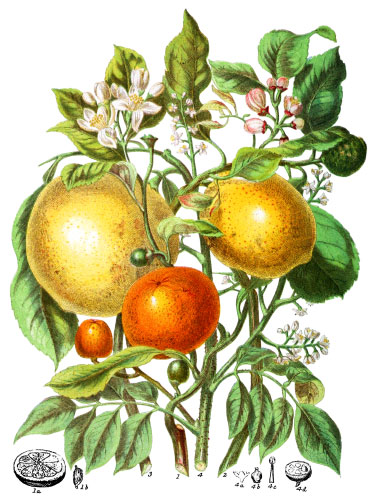Key characteristics
Small trees or shrubs. The stems are either simple, or cylindrial, or round, or dichotomously branched; marked on the surface with the scars of broad leaf-stalks. The interior of the stem consists of a mass of pith traversed by woody fibres usually irregularly disposed, sometimes in numerous concentric circles. The woody tissue contains glands and spiral vessels. The leaves are pinnated, firm, and woody, perennial, generally rolled inwards when young. The flowers are on terminal cones, composed of scales covered on their lower sides with one-celled anthers, which split longitudinally. The pistil flowers are simple naked ovules, placed beneath scales on the margin of contracted leaves. The seeds are hard or spongy coated nuts, with one or more embryos suspended by a thread in the cavity or fleshy or mealy albumen.
This Tribe has close affinity with Coniferaceæ, the young leaves rolled inwards connect it with Ferns, and in general aspect it resembles Palms.
The stems and seeds of these plants contain wholesome starchy substance, as well as nauseous mucilaginous juice.
Select plants in this order
Not all plants listed are illustrated and not all plants illustrated are listed.
- Cycas is the selected type of this remarkable though small tribe; the same name was bestowed by the ancients on a dwarf Palm which grew in Ethiopia. The genus forms an obvious link with Palms and Firs, the columnar stem and single crown of flowers connect it with the former, the cone of fructification with tha latter; in the internal structure also a similarity exists, the woody vessels of the stem being marked with circular disks like those of Firs, and rarely found elsewhere. The stem has no true bark, but is invested with a dense covering of the old bases of leaf-stalks.
- Cycas revoluta (1) was first brought to England in 1758; the ship being attacked by an enemy, the head of the plant was shot off; the stem afterwards sent out a fresh shoot, and thus the curious novelty grew and multiplied in its strange country. The stem contains a cellular starchy substance which Japan is made into a kind of sago, so nourishing that the Japanese soldiers are able to live on a very small portion of it as their daily food. The celebrated traveller, Thunberg, found it to be of excellent quality.
- C. circinalis (2),* a native of the Moluccas, has sometimes a stem 30 feet high; the chief distinction of the species is that the leaves are more curled. Sago is prepared from the pith and stem; the fruit is also eaten, and a mealy substance is obtained by grinding the kernels. Blume, who explored Japan and examined its vegetation, describes a clear transparent gum exuding from those plants, resembling Tragacanth, valuable in healing ulcers.
- Zamia (3)† is a genus of very similar aspect to Cycas, bearing a crown of rigid pinnated leaves, the flowers collected in a cone. It is one of the most prevalent and striking forms of vegetable life in South-Eastern Africa, covering wide tracts on the Caffir frontier.
- Z. horrida, with its stiff grey foliage, beset with prickles at the points of the leaves, is of peculiarly unpleasing appearance.
- Zamia belongs also to the West Indies, affording food to the natives; the stem of Z. pumila and other species contain a supply of wholesome starchy meal.
- Encephelartos is another genus growing at the Cape of Good Hope, known as Caffir-bread, the interior of the stem being eaten by the Caffirs.
- In Mexico this tribe is represented by Dion edule, the large seeds of which furnish arrowroot to the natives. The cones of flowers are scarcely distinguishable from those of Araucaria in the Fir tribe, clearly indicating the affinity of the two Orders.
- Although none of these plants exist at present among the native Flora of this island, yet abundant fossil remains prove that in a former period of the world they formed a considerable portion of the vegetation.
Locations
This Tribe inhabits the Tropics, and the Temperate parts of Asia and America. It is found also in Madagascar, and at the Cape of Good Hope, but it does not exist in equinoctial Africa.
Legend
- Cycas revoluta, Narrow-leaved Cycas. China.
- Stamen Scale.
- Under surface, with Anthers.
-
- Cyas cirinalis, Fertile Frond. East Indies.
- Fruit.
- Section of Ovule.
- Embryo.
-
- Leaves of Zamia. Cape of Good Hope.
- *2 was mentioned in the original description but only 2a–2d were illustrated.
- †3 was mentioned in the original description but only 3a was illustrated.
Explore more
Posters
Decorate your walls with colorful detailed posters based on Elizabeth Twining’s beautiful two-volume set from 1868.
Puzzles
Challenge yourself or someone else to assemble a puzzle of all 160 botanical illustrations.





